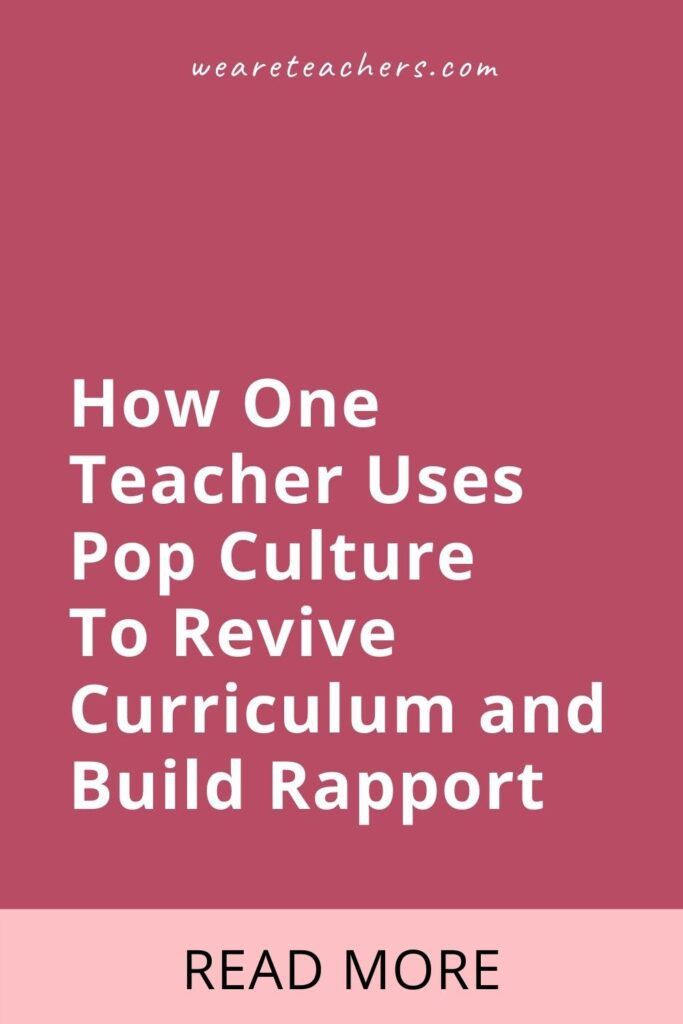As secondary lecturers, one in all our greatest challenges is making studying really feel enjoyable whereas additionally hitting requirements and assembly curriculum necessities. Through the years I’ve discovered that my tendency to embed popular culture into my instruction has been useful in reaching these objectives. Is it essential to know or take part in each popular culture reference or pattern to succeed in the youngsters? Positively not (Caveat: It’s simple to go overboard when you attempt to embody an excessive amount of too typically.). However when achieved with a light-weight contact and in a real approach, it will probably work fantastically. Listed here are a number of methods I’ve included popular culture in my classroom which have had constructive impacts on studying and our surroundings.
What’s New Is Really Outdated
As an ELA trainer, a few of the texts we learn as a category can really feel outdated, irrelevant, or missing context for college students. Probably the greatest methods to carry these texts to life is by connecting them to present developments or media that college students are aware of. This previous college yr, Netflix’s Squid Sport was common in the course of the time my ninth graders have been studying The Odyssey. As the scholars realized the Hero’s Journey and mentioned the present they have been all bingeing, it occurred to me to ask them: Was Squid Sport a Hero’s Journey? There adopted a full of life class dialogue citing proof from the sequence to defend their positions. College students demonstrated true understanding of this literary idea by making use of its attributes to the sequence.
Equally, season 4 of Stranger Issues was launched later within the yr as my tenth graders learn Frankenstein. The scholars have been capable of construct sturdy text-to-text connections between Shelley’s Frankenstein and the characters of Nineteen Eighties Hawkins, Indiana, drama. Typically all it takes to make an outdated subject really feel speedy is to refresh the paradigm and present college students how related ideas recur in media they’re aware of.
Exhibiting vs. Telling: Actual-Life Moments
TikTok has been a boon for making troublesome expertise and ideas digestible and simple to grasp within the classroom. In my rhetoric unit this previous yr, I supplied examples of TikToks posted on company accounts akin to Duolingo for example corporations’ use of ethos, pathos, and logos to succeed in their target market: younger individuals. Within the fall of 2020, Nathan Apodaca’s viral TikTok displaying him skateboarding onto a freeway on-ramp whereas swigging from a jug of cran-raspberry juice to the sound of Fleetwood Mac’s “Desires” helped the youngsters outline “principal character power”—a novel type of character evaluation.
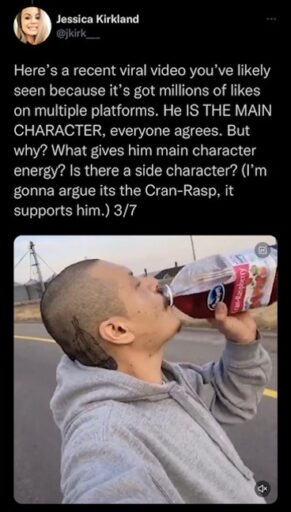

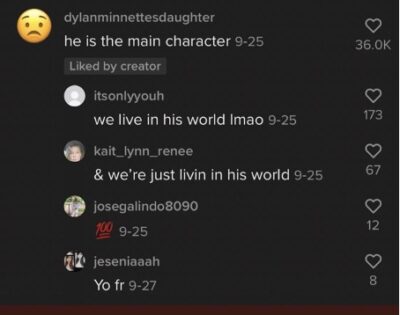

At present trending sounds can succinctly illustrate the that means of literary phrases that may be onerous to understand in a vacuum. For instance, a presently trending sound from the kids’s present The Backyardigans wherein a personality saying “Humorous, sure. However not humorous haha, humorous bizarre” is utilized by varied TikTokers of their movies to completely categorical these small moments in life that we’d outline as ironic.
This spring, the Johnny Depp/Amber Heard defamation trial was throughout TikTok. A lot of my college students developed sturdy opinions on the case based mostly on what they have been seeing within the media. This led to many discussions connecting expertise we’d practiced in school akin to bias, connotation and denotation, and perspective and perspective and making use of them to a real-life, present context. Extra essential, it led to candid concerns of who was considered as reliable and why. How was media influencing or driving our notion of every litigant? These discussions got here from incorporating a popular culture occasion that overlapped with a number of societal points—a well timed, related, and broadly relevant studying expertise.
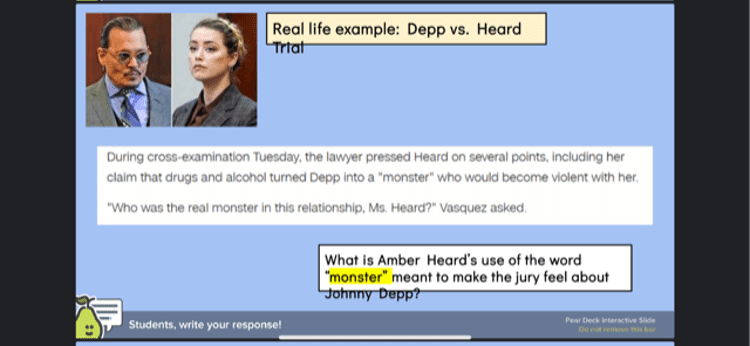

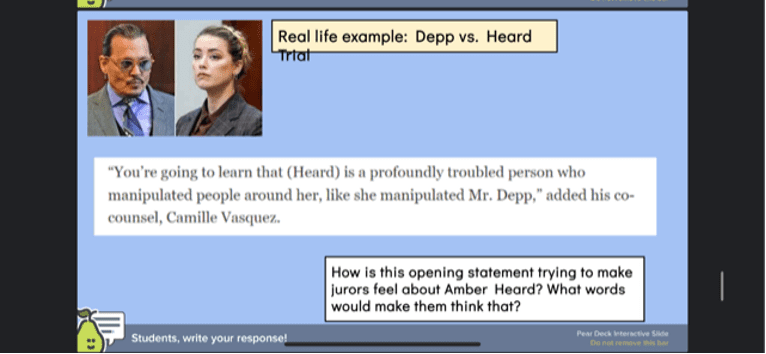

Constructing Classroom Connections and Rapport
Lastly, utilizing popular culture as a touchstone and level of commonality opens the doorways to creating connections with college students over issues they love. Being conscious of common reveals or sequence provides us the chance to ask college students about their pursuits. Then they develop into the specialists by explaining one thing to us.
At present trending matters typically present up in our day by day attendance questions at first of sophistication. Typically a working data of popular culture might help us decode references between college students or a few state of affairs. Typically the youngsters are shocked by what we catch, just because they don’t all the time know that we inhabit most of the identical cultural areas. A baseline consciousness of trending music, public figures, and notable occasions supplies a wealthy place to begin for conversations and connections. It reveals college students that we discover the identical issues attention-grabbing and noteworthy that they do.
Key Ideas:
- Any use of popular culture within the classroom ought to really feel pure, by no means compelled. If it isn’t real for you or the youngsters, it gained’t achieve success. Don’t pressure it!
- Moderation is essential. Not each lesson or dialog wants to incorporate a popular culture reference. On this case, much less is extra.
- Some issues actually needs to be only for the youngsters. I jokingly inform them, “I have TikTok, however I don’t play TikTok.” Know when one thing is related and usable, but in addition know when pulling it into the classroom would possibly wreck a few of the enjoyable for college students.
- Timeliness issues! Popular culture strikes quick, and what labored this yr might not work as properly subsequent yr. Be prepared to adapt and alter as outdated references develop into out of date or new developments pop up.
- This may increasingly go with out saying, however all the time preserve it school- and age-appropriate! Be steward of media and tradition in order that they are often as properly.
Many people begin the varsity yr in search of methods we are able to improve, enhance, or replace current models. As you spend a bit of extra time on social platforms or streaming sequence this summer time, discover what developments soar out to you. They could be simply the factor to clean up what’s gotten a bit stale, or the proper instance of how the whole lot we do within the classroom is actually throughout us.
